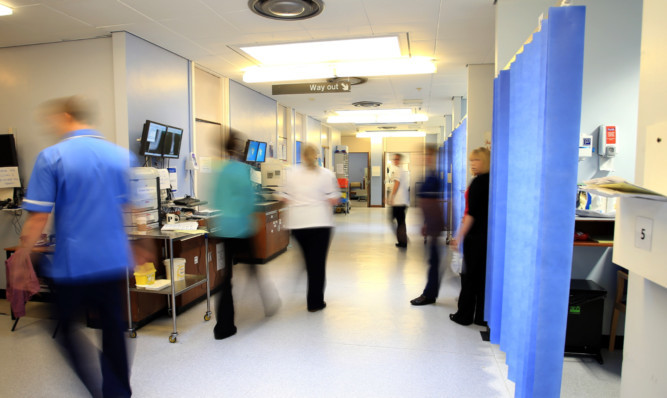More than 6,000 patients in Tayside and Fife have been treated in the wrong hospital ward in the past two years, new figures have revealed.
A recent Government study found the practice is likely to see patients more at risk of dying, spend longer in hospital and be readmitted after being sent home.
Labour claimed problems with so-called boarding out revealed the strain hospitals are under, adding the SNP Scottish Government should invest more in social care.
Deputy leader Alex Rowley said: “Now more than ever we need a health service free at the point of delivery based on patient need not ability to pay, equipped with the resources staff need to deliver the care Scots deserve.
“These figures point to huge levels of stress in our hospitals. We know that only a third of NHS staff believe they have the resources to do their jobs properly.
“This information suggests that too often there isn’t enough space for patients to be treated in the appropriate ward. That is hugely concerning.
“Scottish Labour would give our NHS, established in the 1940s, the tools it needs to face the challenges of the 2040s.
“This starts with substantial investment in social care.
“Greater investment in social care would take significant pressure off of our hospitals and that starts with delivering a national care workers’ guarantee on wages, terms and conditions.”
Figures uncovered by Labour through Freedom of Information requests found 3,418 Fife patients have suffered under “boarding out”.
The Tayside figure was 2,670, but that is likely to be the tip of the iceberg as the health board claimed it only held the information for one year.
Dr Jean Turner, of the Scotland Patients’ Association, said: the “centralisation” of hospitals has led to a cut in bed numbers.
She added that consultants have less control over patients’ treatment if they are moved between wards more often.
But a spokesman for Health Secretary Shona Robison said: “Scotland was the first among the UK nations to take a proactive approach to tackling the issue of boarding.
“We’ve investigated its causes and the effect it has on patients and are working closely with experts at the Royal College of Physicians of Edinburgh to reduce the practice.”
The spokesman added: “We recognise that peaks in demand may require use of beds flexibly at times, however, we are working to ensure that NHS boards are managing their capacity and ensuring that patients are admitted to the right beds at the right time with the right staff.
“Key elements of our work to reduce boarding include freeing up capacity and easing pressure across the system.
“For example, our investment of £100 million over three years in reducing delayed discharge is already seeing real results with a 13% reduction in bed days lost to patients ready to go home.”
